Flying the AT 6 by Budd Davisson
This is such a well written article I just had to include it in the ‘Pilot Stories’ It was written I believe in 1990 by Budd Davisson. His description of flying the T6 Harvard or AT6 (Advanced Trainer) is so engaging and informative, it really makes you feel like you are there with him in the cockpit. As I edited this article for this web site I read it word for word as I pasted the paragraphs and wished I could articulate in the same way the thrill of flying the T6 Harvard.
This no nonsense and straight to the point article has been written in completely ‘lay mans’ pilot terms and is both interesting and educational, please enjoy!
AT-6: School ‘Marm’ With an Attitude
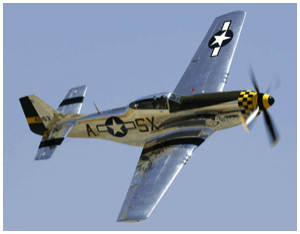
Connie Edwards, long time sparkplug of the warbird movement and quintessential Texan is credited with saying, “Start out in a Bearcat, transition to the P-51 and then you’re ready for the T-6.”
Edwards was referring to the T–6’s less-then-spotless reputation for ground handling. And he’s right. Many civilians transitioning into fighter aircraft are amazed at how much easier fighters are to handle (in most situations, anyway) then the old Texan, a supposedly easily-tamed “trainer.” When I got my chance to fly Mustangs, I was amazed and relieved to find this was absolutely the case.
If the P-51 had been the quantum jump up from the T-6 in ground handling difficulties that it was in aerial performance, my first Mustang hop would have culminated in a spectacular fire at the edge of the runway. Even if I kept control and survived the flight, I would have drowned in post-flight adrenaline flow. Obviously it didn’t happen that way because the Mustang was such a pussy cat compared to the Texan.
I can’t speak for others, but the Six had me so wired for abysmal ground handling that the Mustang was a breath of fresh air. There was nothing that big bird could do that would surprise me. Yes, “relieved” is definitely the right word.
My reaction to the Six was probably typical and definitively indicative of what the old school marm represents…the epitome of the higher-performance trainer. It wasn’t supposed to be easy to fly. It was not, repeat not, supposed to take a student out and give him a good time.
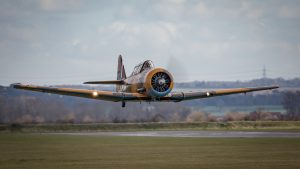 By the same token, the Texan wasn’t supposed to present him with impossible tasks either. And it didn’t. What the AT-6 (SNJ to you Navy types) represented, and still represents, was the finest combination of challenges ever built into a military trainer. The student had to fly the airplane, reading its every nuance. His proficiency benefited from this mental and physical exertion. He got better whether he wanted to or not!
By the same token, the Texan wasn’t supposed to present him with impossible tasks either. And it didn’t. What the AT-6 (SNJ to you Navy types) represented, and still represents, was the finest combination of challenges ever built into a military trainer. The student had to fly the airplane, reading its every nuance. His proficiency benefited from this mental and physical exertion. He got better whether he wanted to or not!
The best indication of how good a trainer the Texan was/is can be seen by the fact that here we are forty years into the jet age and there are still countries around the world using the North America aerial classroom as first-line trainers. As recently as five years ago, major air forces still used it and it is the updating of those air forces which has pumped so many surplus T-6s into the American civilian market.
A specialty industry has developed to support and sell the T-6/SNJ/Harvard. Part of this industry has worked to bring back as many Texans as possible from overseas where they are being retired. Ray Stutsman of Elkhart, Indiana brought back a herd or two of Spanish T-6s while others are working on bringing back the South African birds. Prices vary wildly, ranging from $20,000 to $60,000 with $30-$35,000 giving you a fairly clean airplane with lots of time left on the P&W R-1340.
As is usually the case, you get what you pay for. (Editor’s Note From the Year 2000: Budd, you dummy, you should have bought a couple dozen, when you could. Just quadruple those prices and you’ll be close to today’s prices)
My own point (editor T6 Harvard) – at 2014 prices you are looking at at least £120,000 UK sterling or $200,000 US for a good T6 with a full C of A on the public transport register!
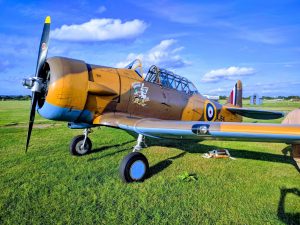 I am not a high-time Texan driver. Without digging through logs and adding up all the numbers, I’d say my time spent in the cavernous cockpit would barely top 100 hours, all of it civilian. Of that time, at least half was in the back seat either receiving dual time (in preparation for bigger birds with longer noses) or giving dual to Texan owners who wanted to know how to land/spin/aerobat their airplane. I’m not the definitive authority on T-6 performance and handling. I am, however, pretty typical of the average civilian pilot who is lucky enough to find himself strapped into one of the biggest pieces of iron commonly available to us.
I am not a high-time Texan driver. Without digging through logs and adding up all the numbers, I’d say my time spent in the cavernous cockpit would barely top 100 hours, all of it civilian. Of that time, at least half was in the back seat either receiving dual time (in preparation for bigger birds with longer noses) or giving dual to Texan owners who wanted to know how to land/spin/aerobat their airplane. I’m not the definitive authority on T-6 performance and handling. I am, however, pretty typical of the average civilian pilot who is lucky enough to find himself strapped into one of the biggest pieces of iron commonly available to us.
My viewpoint is grassroots . . . and reasonably current. Oddly enough, I’m not sure where I flew my first T-6. It may have been the D model operated by Flight Safety out of Vero Beach, Florida. But while I’m hazy where my first T-6 time came from, there’s no doubt where I spent the most instructive time in the Texan: at Junior Burchinal’s Warbird school in Paris, Texas, during the early 1970s. I’ve put a lot of time into T-6s since then and I’ve enjoyed all of them more than I enjoyed those with Junior. I can, however, guarantee I’ve never learned more than in those ten hours with Junior. He believes firmly in working your buns off for your own good. And it worked.
When you climb into the front hole of the T-6 it feels like a fighter. I’ve said this before, many times, but it’s true. And one reason it feels like a fighter is because North American designed the Texan to give the student the feel and controls of a big bird with less speed and a more forgiving nature.
Describing the cockpit of a T-6 is like describing a cockpit of most World War Two fighters (especially North Americans), although it is quite a bit larger than something like a Bearcat. Beneath your left arm are all of the primary accessory controls, i.e. elevator, aileron, and rudder trims, as well as the landing gear and flap actuators. All of the electronic and radio goodies are on a console by your right arm.
 You have to dig deep to find the visual differences between a T-6 and SNJ and to differentiate the models of Sixes, which the Air Force, adopted. One sure clue of a SNJ or an early T-6 is a tail wheel lock sticking out of the left side of the canopy rail. Later T-6s had steerable tail wheels similar to the Mustang, which unlocked when you pushed the stick forward. Supposedly this feature was on later Ds, all Gs and the Canadian-built Harvards IV’s while earlier models and all SNJs had tail wheels that were either locked straight forward or free swivel depending on the position of the control in the cockpit.
You have to dig deep to find the visual differences between a T-6 and SNJ and to differentiate the models of Sixes, which the Air Force, adopted. One sure clue of a SNJ or an early T-6 is a tail wheel lock sticking out of the left side of the canopy rail. Later T-6s had steerable tail wheels similar to the Mustang, which unlocked when you pushed the stick forward. Supposedly this feature was on later Ds, all Gs and the Canadian-built Harvards IV’s while earlier models and all SNJs had tail wheels that were either locked straight forward or free swivel depending on the position of the control in the cockpit.
Another noticeable difference in the later airplanes is the lack of a large cut out in the upper right hand side of the instrument panel; In SNJs and earlier model Sixes, a provision was made to mount a .30 caliber machine gun and the receiver stuck through the instrument panel. The later airplanes also eliminated the inertia starter, so the energise and engage pedal between the rudders may or may not be there. SNJ’s and early airplanes also have a separate hydraulic actuation lever by your left knee.
In actuality there were a ton of minor differences between all the models but only the steerable tailwheel and the late model servo-tabs on the ailerons (which really do make the airplane much nicer to fly) are noticeable.
Cranking up a round engine is one of the world’s true sensual delights and it’s made even more so if an inertia starter is being used. The whine of the starter winding up and the descending mechanical growl of engagement are right out of a late night movie sound track. And, of course, as the engine coughs into life, blowing smoke and noise past your elbows, which are sticking out over the canopy rails, the mechanical nostalgia gets even deeper.
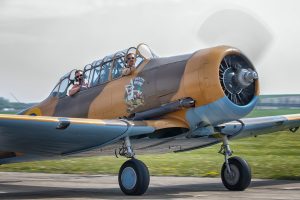 Canopy back, “S” turning your way out to the runway, there’s no doubt you are working with a big piece of iron. As you roll out on to the centre line, double checking to make sure the tailwheel is locked, you bring the power up smoothly and wait for the 600 horses to start shoving all that sheet metal down the runway. Many airplanes accelerate much faster than a Six and because of sheer size the Texan feels almost as if it is lumbering along. Your visibility isn’t nearly as bad as expected, only the centre portion of the runway is blocked, so it is relatively simple to ease rudder one way or the other to keep tracking straight.
Canopy back, “S” turning your way out to the runway, there’s no doubt you are working with a big piece of iron. As you roll out on to the centre line, double checking to make sure the tailwheel is locked, you bring the power up smoothly and wait for the 600 horses to start shoving all that sheet metal down the runway. Many airplanes accelerate much faster than a Six and because of sheer size the Texan feels almost as if it is lumbering along. Your visibility isn’t nearly as bad as expected, only the centre portion of the runway is blocked, so it is relatively simple to ease rudder one way or the other to keep tracking straight.
As soon as the power is against the stop, the tail is picked up gently (repeat, gently) and the airplane will fly off with little or no provocation from the pilot who thinks he’s in command. Hoist the tail vigorously and you’ll get a surprisingly quick swing to the left as the gyroscopic precession of the prop kicks in.
At this point I always have to remind myself what model of Six I’m flying, since retraction of the landing gear requires an extra step in the earlier birds. In the late models, you just jerk the gear handle (that’s down by your left knee) in and up. In earlier Sixes and most SNJs, however, you have to first activate the hydraulic system by pushing down on a power lever which gives you juice for something like thirty seconds. At least once I thought a T-6 was a real turkey in climb, then looked down at my shadow and saw that the gear was still out. Dumb!
Setting up climb power at 30 inches and 2000 rpm you can just sit back and watch as the world gradually falls away. While the rate of climb isn’t going to do much to amaze you, the feeling that comes over you will. You find yourself drifting into a military mental mode, since there is nothing about the airplane that even vaguely reminds one of a civilian airplane. Absolutely nothing! The Texan is hardcore military and the only difference between the Six and a fighter is the number on the airspeed gauge is much lower. Numbers are only numbers. If you don’t have telephone poles whizzing past to give numbers some scale, they are totally abstract, so you can play fighter pilot to your hearts content in a Six.
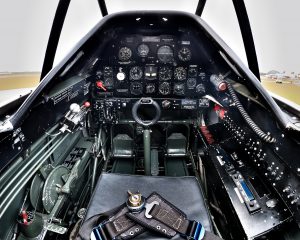 I dearly love to aerobat the Six, although I’ll have to admit that since my chicken quotient is much higher than my talent quotient I keep a healthy amount of air between me and the hard stuff below . . . like 6,000 feet for instance. At that altitude, a Six will only be indicating 160-170 mph (depending on how clean the airplane is and how much the airspeed lies), so I’ll drop the nose and get 180 on the clock while centring a point on the horizon in the windshield. Rolling forty-five degrees to the right, I pull the nose up into a giant barrel roll to the left, keeping my reference point dead in the centre of the roll. The Six loves those kinds of manoeuvres . . big smooth ones. It’s so stable in all regimes that it literally grooves through rolls as if on rails.
I dearly love to aerobat the Six, although I’ll have to admit that since my chicken quotient is much higher than my talent quotient I keep a healthy amount of air between me and the hard stuff below . . . like 6,000 feet for instance. At that altitude, a Six will only be indicating 160-170 mph (depending on how clean the airplane is and how much the airspeed lies), so I’ll drop the nose and get 180 on the clock while centring a point on the horizon in the windshield. Rolling forty-five degrees to the right, I pull the nose up into a giant barrel roll to the left, keeping my reference point dead in the centre of the roll. The Six loves those kinds of manoeuvres . . big smooth ones. It’s so stable in all regimes that it literally grooves through rolls as if on rails.
The loops are the same. The Six seems like it takes forever to find the way up and over the top, chugging away like a locomotive headed for Peoria. The T-6 has some good/bad habits that make it an excellent trainer. One of these is the ability to unload in an accelerated stall, if you don’t pay attention to the almighty airspeed/G-force relationship something I always keep in the back of my mind when I’m twisting the airplane’s tail.
The Texan stalls clean somewhere in the neighbourhood of 70 mph but the addition of G and/or bank angle can run that up rapidly. I love to show students that capability by pulling a bit too hard on the top of a loop. The airplane will gently stall and do a half-snap to right side up and will continue into a spin if you wait too long to release the back pressure.
You can see the same type of stall performance in a tight turn. I have the student pull into a tight turn to the left, increasing back pressure as the speed burns off. Somewhere along the line the airplane will decide it’s had enough and do a half snap to the outside (if the ball is centered) in one of the prettiest vertical reverses you’ve ever seen. If the ball is shoved to the outside, however, the Six will snap to the inside and you’d better have a little altitude to recover.
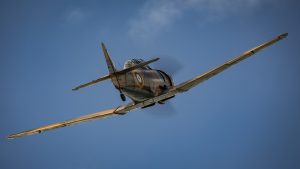 Accompanying this ability to unload when you least expect it is a definite appetite for secondary stalls. If you spin the airplane or stall in any way, you absolutely have to allow time to accelerate and not put on any G until the Six has enough speed to support flight. It’s really easy to accidentally spin the airplane while dog fighting and get anxious on the recovery, causing a secondary stall and a spin in the other direction. This has killed more than a few experienced pilots who are goofing around without the obligatory cushion of extra altitude.
Accompanying this ability to unload when you least expect it is a definite appetite for secondary stalls. If you spin the airplane or stall in any way, you absolutely have to allow time to accelerate and not put on any G until the Six has enough speed to support flight. It’s really easy to accidentally spin the airplane while dog fighting and get anxious on the recovery, causing a secondary stall and a spin in the other direction. This has killed more than a few experienced pilots who are goofing around without the obligatory cushion of extra altitude.
Don’t construe these stall characteristics as being bad. Yes, the T-6 will bite you but it will do so the same way every time. It’s totally predictable. You get slow and pull and the Texan lets you have it right now! Those areas where the Six tends to get feisty are those areas where light handed flying is required. A little attention to the speed/G relationship will keep you out of trouble all together. In other words, you have to learn to fly the airplane . . . which is the true test of a trainer in the first place.
One of the neatest things about the Texan is to be sitting there just chugging along at altitude, pretending the world is still at war. You are surrounded by a flat-black and zinc chromate green world that’s awash in a sea of cryptic placards. You sit quite high in the airplane, well over the nose, and you are very conscious of protruding up into a greenhouse enclosure with cockpit framing everywhere you look. Your feet are stretched out to either side of the stick, resting in giant trays with equally giant rudder pedals at the forward end. Even the simplest task, like checking the fuel, reminds you that you are astride an anachronistic military animal . . . the fuel gauges are on the floor on either side of the seat. Often you have to shade your eyes to see down into the bowels of the airplane.
Every time I get ready to land a Six I can feel my mouth start to turn to dust, a trait experienced Six drivers say is good. At least I’m not over-confident (an understatement), since most of the Six’s reputation for being cantankerous comes from the landing phase.
Throwing the gear out on downwind, you check the gear lights, but you also squint to see through little plexiglass windows on the top of each side of the wing centre section. It’s only by checking to see that the locking pins are secure that you know for sure the gear is locked down. Then you set up what is fairly normal approach planning to have 90 mph on final, by which time you’ll have all 45 degrees of flap out. The flaps are split trailing edge affairs rather than true-hinged surfaces, so they generate as much drag as they do lift. This puts your nose down and gives you tremendous visibility on final.
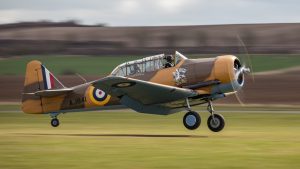 As a normal rule, I’ll opt for a three-point landing and I slide my feet up high on the rudder pedals to give mechanical advantage on the brakes should I need them. Actually, the only assumption you can make about a T-6 at all is that it is going to swerve one way or the other and you can’t be sure which way. So you plan accordingly, getting your nerves and feet ready to handle whatever it dishes out. The results of a bad swerve can be really exciting-like crumpled wings, folded landing gear, etc. If you do it really right, you’ll be awarded with a view of the airport from an upside down position alongside the runway. The trick is to catch the swerves right at the beginning while they are still tiny turns. Nip each of those in the bud and the airplane is absolutely no problem. It only gets nasty, if you let the nose wander too far before getting your feet in the act.
As a normal rule, I’ll opt for a three-point landing and I slide my feet up high on the rudder pedals to give mechanical advantage on the brakes should I need them. Actually, the only assumption you can make about a T-6 at all is that it is going to swerve one way or the other and you can’t be sure which way. So you plan accordingly, getting your nerves and feet ready to handle whatever it dishes out. The results of a bad swerve can be really exciting-like crumpled wings, folded landing gear, etc. If you do it really right, you’ll be awarded with a view of the airport from an upside down position alongside the runway. The trick is to catch the swerves right at the beginning while they are still tiny turns. Nip each of those in the bud and the airplane is absolutely no problem. It only gets nasty, if you let the nose wander too far before getting your feet in the act.
The machine wheel lands quite easily, which is what most folks do these days. However, the swerving tendency is still there and you have to be wide awake as the tail settles because it just loves to meander as the wind goes out of the rudder.
I’ve always found G models and Harvard Mk. IVs easier to land, probably because of the steerable tail-wheel but that may be an illusion brought about by coincidence and luck.
A lot of folks think they’ll never get a chance to fly a real Warbird. With the numbers of actual combat aircraft dwindling down to nothing, it’s easy to overlook the fact that there are between 500 to 600 T-6s running around the country. That number is increasing everyday and the T-6 is just as much Warbird as anything that totes along a half dozen .50 calibers. More important, you can go a lifetime without finding a Mustang owner willing to give or sell you a ride. But the possibility of some free fuel and a couple of cool ones can tempt many a T-6 owner into letting rag legs like you and me into the backseat.
There you aren’t cooped up in a hot, sweaty, noisy, little box as you are in the back of a P-51 . . . strictly a passenger in a cement mixer. In the back of a T-6 you are still a pilot and can actually fly the airplane. You can put your hands on forty years of history and get a feel for the way it was.
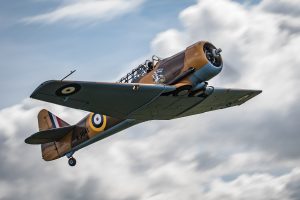 One note of caution: like any Warbird the T-6 is a high-performance machine possessed of high-performance quirks and maintenance. So don’t go up with just any T-6 driver since the law of averages says there’s bound to be at least a few who don’t get enough time to stay truly proficient. Don’t be afraid to ask around before jumping in with someone who may or may not be as good as he or she thinks they are.
One note of caution: like any Warbird the T-6 is a high-performance machine possessed of high-performance quirks and maintenance. So don’t go up with just any T-6 driver since the law of averages says there’s bound to be at least a few who don’t get enough time to stay truly proficient. Don’t be afraid to ask around before jumping in with someone who may or may not be as good as he or she thinks they are.
In a T-6 you get the same nostalgic rush most Warbirds give, only the raw edged performance is missing. Most of that performance, however, is measured only by numbers on a dial. Maybe T-6 owners should repaint their airspeed indicators!